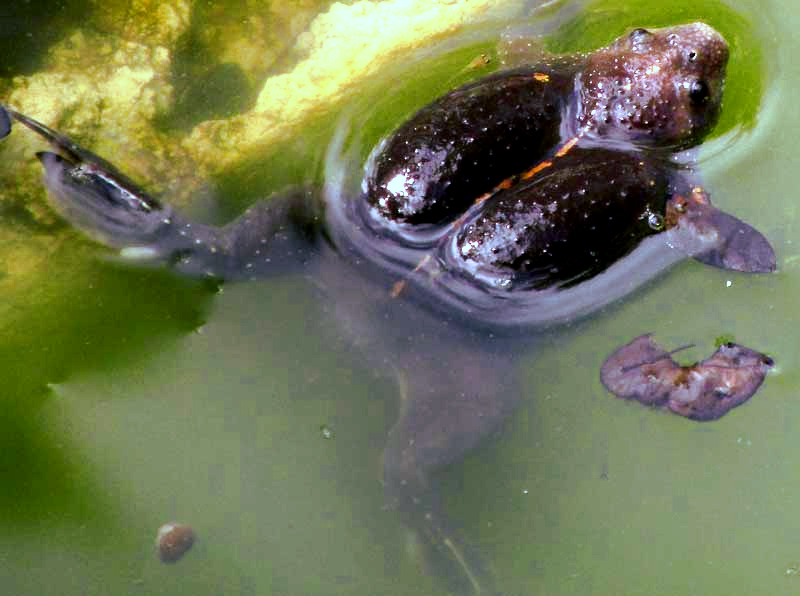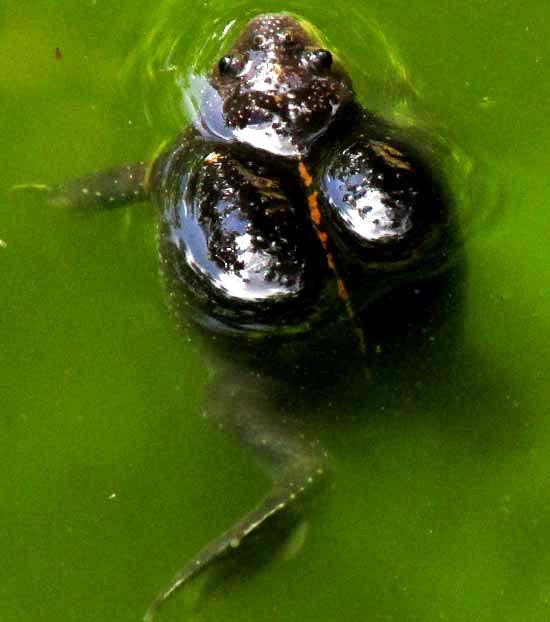Excerpts from Jim Conrad's
Naturalist Newsletter
from the September 6, 2018 Newsletter issued from Rancho Regenesis in the woods ±4kms west of Ek Balam Ruins; elevation ~40m (~130 ft), N~20.876°, W~88.170°; central Yucatán, MÉXICO
MEXICAN BURROWING TOAD

The rancho's little cement-lined pond continues to be both a blessing and a curse to critters who jump or tumble into its water and can't get out because of its vertical walls. I've added rocks as best I can enabling most frogs and larger snakes to escape but turtles still have to be taken out by hand. I visit several times a week just for that purpose. This week something new turned up working along the pond's edge looking for an exit. At first I thought it was a small turtle, but up closer it proved to be what shown at the top of this page.
It was warty and displayed bulging, toxin-producing parotoid glands immediately behind the eyes like a toad, but its snout was pointier than I'd ever seen on a toad, and its eyes smaller. Most remarkable, though, were the two bladder-like swellings on the back, serving as water-wings. I'd never seen or heard of anything like that in the frog/toad world. Each time I approached, hoping to catch it and get close-ups, the animal would dive and surface someplace else. The only other shot managed, better showing the parotoids, is shown below:

*UPDATE: Since this observation was made in 2018, many more identification resources have become available on the Internet. Earlier, my field guide guided me to the Sheep Frog, Hypopachus variolosus. However, in 2024 when I uploaded this page's pictures to iNaturalist, user "escalante-pasos," a specialist on the amphibians and reptiles of the Yucatan Peninsula, recognized the Mexican Burrowing Toad, RHINOPHYRYNUS DORSALIS. That species occurs from southern Texas, eastern and southern Mexico, south into Costa Rica.
Mexican Burrowing Toads are the single living species in the Burrowing Toad Family, the Rhinophyrnidae; several fossil genera in the family are known, whose species now are extinct. Burrowing Toads feed on burrowing ants and termites.
Wikipedia provides plenty of interesting information about the species on its Mexican Burrowing Toad page.